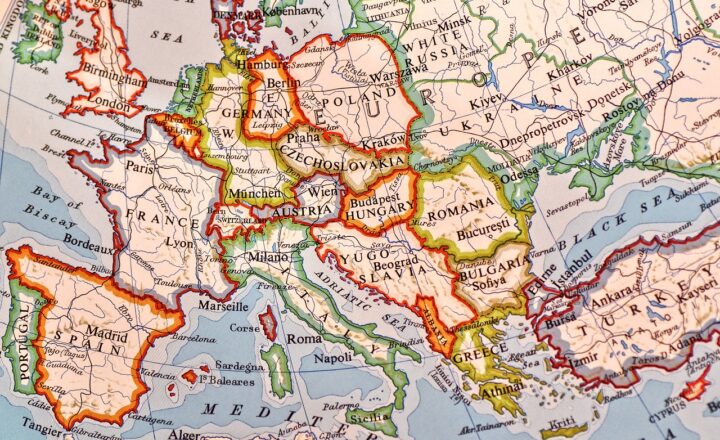
Perfume has captivated the human senses for millennia, with evidence of its use dating back to ancient civilizations. Among the earliest users of fragrance were the Egyptians and the Mesopotamians, who not only created beautiful scents but also attributed deep spiritual significance to them. This article explores the fascinating origins of perfume in these ancient societies, delving into their methods, ingredients, and cultural importance.
1. The Cultural Significance of Fragrance
In ancient Egyptian and Mesopotamian cultures, fragrance was more than just an olfactory delight; it was interwoven with their religious and spiritual practices. Scent was believed to connect the physical world with the divine. In Egypt, for instance, perfumes were often used in rituals and offerings to the gods. They believed that the smoke of burning incense could carry prayers to the heavens, enhancing communication with the divine.
The Mesopotamians also held similar beliefs—a fragrant offering was seen as a sign of respect and devotion to their deities. The goddess Ishtar, for example, was often associated with perfumes and was invoked for love and war. The ancients understood that scent had the power to evoke emotion, attract, and repel.
2. Ingredients Used in Ancient Perfume
The ancient Egyptians and Mesopotamians utilized a rich variety of natural ingredients to create their perfumes. Some of the most prominent included:
- Resins: Frankincense and myrrh were highly prized for their aromatic properties. These resins were often used in both incense and perfume, believed to have purifying qualities.
- Spices: The use of spices such as cinnamon, cardamom, and clove added exotic and warm aromas to perfumes. These spices were also sometimes used in embalming practices, reflecting their significance in both life and death.
- Floral Extracts: Egyptians adored lotus and lily, which were features in many scents. Jasmine, known for its intoxicating fragrance, was another essential floral component in ancient perfumes, symbolizing love and beauty.
- Oils: They created base oils from nuts, seeds, and grains, such as sesame and almond. These oils served as carriers to dilute the concentrated scents and make them suitable for application on skin or clothing.
The meticulous blending of these ingredients meant that perfume-making was a sophisticated art form in these cultures.
3. The Art of Perfume-Making in Ancient Egypt
In ancient Egypt, the preparation of perfume was an elaborate process that required knowledge, skills, and tools. Artisans, known as ‘perfumers,’ crafted these luxurious substances using traditional methods that included:
- Steam Distillation: Though not known as modern steam distillation, the Egyptians employed methods resembling it by passing water vapors through fragrant plant materials, capturing essential oils potent in aroma.
- Maceration: This was a common technique where plant materials were soaked in oils, allowing the aromas to infuse the base oil. This method emphasized the synergy between the botanical source and carrier oils.
- Incorporating Knowledge of Nature: The Egyptians had an extensive understanding of the local flora and their properties. This knowledge allowed them to innovate and create unique blends that catered to various purposes, from everyday use to ceremonial applications.
Perfumes were carefully stored in ornate vessels, often made of glass, alabaster, or precious metals. These containers were not only functional but also decorative, showcasing the artistry of the civilization.
4. Mesopotamian Innovations in Fragrance
Similar to their Egyptian neighbors, the Mesopotamians excelled in the art of perfumery, with techniques and ingredients that echoed their cultural beliefs. Mesopotamian perfumes were most famously noted in texts and artifacts, which chronicle:
- Use of Cuneiform Tablets: They developed recipes for perfumes inscribed on clay tablets, indicating the ingredients and preparation methods. This practice documented their extensive knowledge and appreciation for fragrance.
- Access to Trade Routes: Mesopotamians were positioned along trade routes that allowed them to import exotic materials from distant lands, enhancing their scent profiles. Ingredients like sandalwood and rose came from far-flung regions, showcasing their willingness to embrace diversity in fragrance.
- Complex Blending Techniques: The Mesopotamians often infused their perfumes with a range of ingredients, resulting in complex layered scents that could serve as status symbols among the elite, echoing the socioeconomic fabric of their society.
These practices made perfume an essential part of everyday existence and an integral aspect of their cultural identity, showcasing how deeply fragrances resonated within their lives.
5. Perfume in Burial Practices
Both cultures recognized the importance of fragrance in the afterlife, embedding it within burial rituals that glimmer with spiritual significance. Egyptians used oils and perfumes to anoint the dead, believing that these scents could purify the soul and prep it for its journey to the afterlife. The famed tomb of Tutankhamun contained a multitude of unguent jars, illuminating how these rituals were intertwined with their views on mortality.
In Mesopotamia, similar beliefs prevailed. Fragrances were placed in tombs to accompany the deceased, ensuring they would carry the comforting scent into the next realm. The scent was a token of respect, reflecting the high regard for the individuals and their journeys beyond this life.
6. The Transition to Modern Perfume
Perfume production techniques and meanings have evolved from these ancient practices to the present day. Ancient methods paved the way for modern perfumery, which employs synthetic alternatives and advanced chemical processes to capture diverse scents more efficiently. However, while modern perfumers often aim for innovative creations, the soul of fragrance still echoes the rituals, beliefs, and artistry of ancient civilizations.
Today, the perfume industry is a multi-billion-dollar global enterprise thriving on the legacies of those ancient, fragrant cultures. The appreciation, however, remains deeply rooted in symbolic practices established thousands of years ago.
Conclusion
The exploration of perfume’s origins in ancient Egypt and Mesopotamia reveals a profound connection to spirituality, culture, and artistry. These civilizations laid the groundwork for what would eventually blossom into a sophisticated perfume industry. While today’s scents may differ vastly in composition and distribution, the essence of why we create and wear fragrances can often be traced back to those early practices that intertwined scent with identity, ritual, and legacy.
Through understanding this rich history, we can appreciate not only the fragrances that we wear today but also the incredible journey that has brought scent from the ancient temples of Egypt and temples of Mesopotamia to the modern world.







